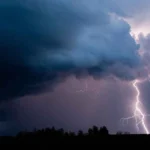
October is a month filled with significant events, natural wonders, and cultural milestones. From groundbreaking achievements in science and technology to vibrant celebrations and important awareness campaigns, October holds a special place in history and our collective consciousness. Here are some fascinating facts about this dynamic month, highlighting its diverse and impactful occurrences.
October in the Gregorian Calendar: October is the tenth month of the year in the Gregorian calendar, which is the calendar system currently used by most of the world. This month has 31 days and is one of the seven months with this length. The Gregorian calendar was introduced by Pope Gregory XIII in October 1582, reforming the previously used Julian calendar to correct inaccuracies in the calculation of leap years. October is a transitional month, marking the full swing of autumn in the Northern Hemisphere and the onset of spring in the Southern Hemisphere, bringing with it notable weather changes and seasonal activities.
Origin of the Name “October”: The name “October” comes from the Latin word “octo,” meaning eight. This is because October was originally the eighth month in the ancient Roman calendar, which began in March. When January and February were added to the beginning of the year by a calendar reform, October retained its name despite becoming the tenth month. The legacy of this naming convention is a reminder of the historical evolution of the calendar system and how cultural and political changes can impact even the way we measure and divide time.
October Birthstones: The birthstones for October are opal and tourmaline. Opal is renowned for its unique play of color, with shifting hues that make each gem distinct. Ancient cultures believed opals had magical properties and could bring good luck. Tourmaline, on the other hand, is known for its wide range of colors, with each color variant believed to have different healing properties. Both gemstones are popular in jewelry and are cherished for their beauty and perceived metaphysical qualities, making them meaningful gifts for those born in October.
October Birth Flower: The birth flower for October is the marigold, known for its vibrant orange and yellow blooms. Marigolds are often associated with warmth, creativity, and the celebration of life. In many cultures, marigolds are used in various ceremonies and festivals. For example, in Mexico, marigolds are an integral part of the Day of the Dead (Día de los Muertos) celebrations, where they are used to honor deceased loved ones. Their bright colors and strong fragrance are believed to attract the spirits of the dead, guiding them back to the living world.
October in the Hemispheres: In the Northern Hemisphere, October is associated with autumn, characterized by falling leaves, cooler temperatures, and harvest festivals. This month brings about a shift in activities, with people preparing for winter and celebrating holidays like Halloween. Conversely, in the Southern Hemisphere, October marks the arrival of spring. This season is associated with blooming flowers, longer days, and a reawakening of nature. The contrasting seasonal experiences highlight the diverse climatic patterns across the globe.
International Coffee Day: October 1st is celebrated as International Coffee Day, a day dedicated to appreciating one of the world’s most beloved beverages. This day is recognized by the International Coffee Organization and aims to promote fair trade coffee and raise awareness about the plight of coffee growers. Coffee is a significant part of many cultures and economies, with billions of cups consumed daily worldwide. Celebrations on this day often include coffee tastings, special deals at coffee shops, and educational events about coffee cultivation and its impact on the environment and communities.
International Day of Non-Violence: The United Nations declared October 2nd as the International Day of Non-Violence to coincide with Mahatma Gandhi’s birthday. Gandhi, a leader in India’s struggle for independence, is celebrated for his philosophy of non-violent resistance and civil disobedience. This day is observed globally to promote peace, tolerance, and understanding. Events typically include educational activities, public speeches, and community outreach programs that encourage resolving conflicts without violence and fostering a culture of peace.
Oktoberfest in Munich: The famous Oktoberfest in Munich, Germany, usually begins in late September and ends in the first week of October. This world-renowned festival originated in 1810 to celebrate the marriage of Crown Prince Ludwig and Princess Therese. Today, it is the largest beer festival in the world, attracting millions of visitors who come to enjoy traditional Bavarian beer, food, music, and folk dances. Oktoberfest features massive beer tents, amusement rides, parades, and a rich display of Bavarian culture and heritage, making it a significant cultural event.
Chuck Yeager Breaks the Sound Barrier: On October 14, 1947, Chuck Yeager became the first person to break the sound barrier in level flight. Flying the experimental Bell X-1 aircraft, named “Glamorous Glennis,” Yeager reached a speed of Mach 1.06 (about 700 mph) at an altitude of 45,000 feet. This historic flight took place over the Rogers Dry Lake in California and marked a significant milestone in aviation history, paving the way for the development of faster and more advanced aircraft. Yeager’s achievement demonstrated human ingenuity and the potential for overcoming seemingly insurmountable challenges.
World Food Day: October 16th is World Food Day, dedicated to tackling global hunger. Established by the United Nations Food and Agriculture Organization (FAO) in 1979, this day aims to promote awareness and action for those who suffer from hunger and to ensure food security and nutritious diets for all. Events on World Food Day include conferences, media campaigns, hunger walks, and food drives. The day serves as a reminder of the importance of sustainable agriculture, equitable food distribution, and the collective effort needed to end hunger worldwide.
The Great Chicago Fire: The Great Chicago Fire raged from October 8 to October 10, 1871, devastating much of the city of Chicago. The fire began in a small barn owned by the O’Leary family and quickly spread due to dry conditions, wooden structures, and strong winds. The inferno destroyed over 17,000 buildings, left approximately 100,000 people homeless, and resulted in around 300 fatalities. Despite the immense destruction, the fire led to significant advancements in fire safety regulations and the rapid rebuilding and modernization of Chicago, transforming it into a more resilient and architecturally innovative city.
Largest Pumpkin Ever Grown: The largest pumpkin ever grown weighed an astounding 2,624 pounds (1,190.5 kg) and was grown by Mathias Willemijns of Belgium in October 2016. This massive pumpkin set a new world record at the Giant Pumpkin European Championship in Ludwigsburg, Germany. The remarkable size of the pumpkin was achieved through careful cultivation practices, including meticulous attention to soil quality, watering, and pest control. Giant pumpkin growing has become a competitive and popular hobby, with enthusiasts around the world aiming to break new records each year.
United Nations Day: October 24th is celebrated as United Nations Day, marking the anniversary of the UN Charter coming into force in 1945. This day commemorates the establishment of the United Nations and its mission to promote peace, security, human rights, and social progress globally. United Nations Day is observed with various activities, including conferences, cultural performances, and educational events that highlight the UN’s work and achievements. It serves as an opportunity to reflect on the importance of international cooperation and the ongoing efforts to address global challenges.
Black Tuesday Stock Market Crash: The infamous “Black Tuesday” stock market crash occurred on October 29, 1929, marking the start of the Great Depression. On this day, the New York Stock Exchange saw an unprecedented sell-off of stocks, leading to a massive decline in market value. The crash wiped out billions of dollars in investments, causing widespread financial panic and contributing to the economic downturn that lasted throughout the 1930s. The Great Depression had profound effects on economies worldwide, leading to high unemployment rates, poverty, and significant changes in financial regulations and government policies.
Cuban Missile Crisis: In October 1962, the Cuban Missile Crisis brought the world to the brink of nuclear war. The crisis began when the United States discovered Soviet nuclear missiles being installed in Cuba, just 90 miles from the U.S. coast. For 13 tense days, President John F. Kennedy and Soviet Premier Nikita Khrushchev engaged in intense negotiations. The crisis ended when the Soviet Union agreed to remove the missiles in exchange for the U.S. promising not to invade Cuba and secretly agreeing to remove American missiles from Turkey. The Cuban Missile Crisis highlighted the dangers of the Cold War and underscored the need for improved communication and diplomatic measures between nuclear powers.
Average October Temperature in New York City: The average temperature in October in New York City is around 57°F (13.9°C). October marks a transition from the warmer days of late summer to the cooler, crisper days of autumn. The weather in October can be quite variable, with some days feeling like the tail end of summer and others hinting at the approaching winter. This month is known for its beautiful fall foliage, making it a popular time for tourists and locals alike to enjoy outdoor activities, strolls in Central Park, and seasonal events.
Highest Recorded Temperature in October in Death Valley: The highest recorded temperature in October in Death Valley, California, was 113°F (45°C) on October 5, 1989. Death Valley is known for its extreme temperatures, being one of the hottest places on Earth. October generally marks a slight cooling from the scorching summer months, but temperatures can still reach dangerous levels. The arid desert environment, with minimal rainfall and vast expanses of barren landscape, contributes to the intense heat experienced in this region. Visitors to Death Valley in October are advised to take precautions against heat-related illnesses.
International Day for the Eradication of Poverty: October 17th is recognized by the United Nations as the International Day for the Eradication of Poverty. This day aims to promote awareness of the struggles faced by those living in poverty and to encourage actions toward eradicating it. Observed since 1993, the day includes various activities such as public speeches, educational campaigns, and community outreach programs. The focus is on addressing the root causes of poverty and promoting sustainable development, human rights, and social inclusion. It serves as a call to action for governments, organizations, and individuals to work together to improve the lives of those in need.
Vincent van Gogh’s “Starry Night”: The famous painting “Starry Night” by Vincent van Gogh was completed in October 1889. Painted while Van Gogh was a patient at the Saint-Paul-de-Mausole asylum in Saint-Rémy-de-Provence, France, “Starry Night” depicts a swirling night sky over a quiet town, with a luminous crescent moon and radiant stars. This masterpiece is renowned for its vibrant colors, emotional intensity, and innovative use of brushstrokes. “Starry Night” is considered one of Van Gogh’s most iconic works and a prime example of his unique artistic vision and style. Today, it is housed in the Museum of Modern Art in New York City and continues to inspire and captivate audiences worldwide.
First Model T Ford Built: The first Model T Ford was built in October 1908, revolutionizing the automobile industry. Developed by Henry Ford and his team, the Model T was designed to be affordable, reliable, and easy to maintain. Its introduction marked the beginning of mass production techniques, most notably the assembly line, which significantly lowered production costs and made cars accessible to a broader segment of the population. The Model T, also known as the “Tin Lizzie,” became incredibly popular and had a profound impact on American society, transforming transportation, promoting economic growth, and contributing to the development of the modern automotive industry.
Vatican City Foundation: The smallest country in the world, Vatican City, was founded as an independent state in October 1929 through the Lateran Treaty. This treaty was signed by the Holy See and the Kingdom of Italy, recognizing Vatican City as a sovereign entity and establishing its independence. Covering only about 44 hectares (110 acres), Vatican City is the spiritual and administrative center of the Roman Catholic Church. It houses significant religious and cultural sites, including St. Peter’s Basilica, the Vatican Museums, and the Sistine Chapel. Despite its small size, Vatican City plays a crucial role in global religious affairs and diplomacy.
Amazon River’s Lowest Level: The longest river in South America, the Amazon River, reaches its lowest level in October. This period marks the end of the dry season in the Amazon Basin, where water levels can drop significantly, affecting navigation and the surrounding ecosystem. The low water levels expose riverbanks and create isolated pools, impacting local wildlife and communities that depend on the river for transportation, fishing, and agriculture. The fluctuating water levels of the Amazon River highlight the delicate balance of the region’s environment and the challenges faced by those living in the area.
Largest Recorded Hailstone: The largest recorded hailstone fell in Bangladesh in October 1986, measuring 2.25 pounds (1.02 kg). This massive hailstone caused significant damage and injuries, illustrating the destructive potential of severe weather. Hailstones form in thunderstorms with strong updrafts, which carry water droplets upward into extremely cold areas of the atmosphere, where they freeze and accumulate layers of ice. When they become too heavy to be supported by the updrafts, they fall to the ground. The 1986 hailstone in Bangladesh remains one of the most remarkable examples of extreme weather phenomena.
China’s First Manned Space Mission: In October 2003, China launched its first manned space mission, Shenzhou 5, becoming the third country to independently send humans into space. Astronaut Yang Liwei orbited the Earth 14 times during his 21-hour mission, marking a significant milestone in China’s space program. This achievement demonstrated China’s growing technological capabilities and its commitment to becoming a major player in space exploration. The success of Shenzhou 5 paved the way for future Chinese space missions, including the development of a space station and plans for lunar exploration.
Breast Cancer Awareness Month: The World Health Organization (WHO) designated October as Breast Cancer Awareness Month to increase awareness and support for those affected by breast cancer. Throughout the month, various activities and events are organized to educate the public about breast cancer prevention, early detection, and treatment options. Pink ribbons and themed events help raise funds for research and support services for patients and survivors. Breast Cancer Awareness Month plays a crucial role in reducing the stigma associated with the disease and encouraging women to undergo regular screenings, ultimately saving lives through early intervention.
Frequently Asked Questions about the Month of October:
- Q: Does October have a spooky reputation for a reason?
A: Yes, October is widely associated with spooky themes and Halloween celebrations. Here’s why:
- Halloween: Celebrated on October 31st, Halloween has roots in ancient Celtic traditions and marks a day associated with spirits and the dead. Over time, it evolved into a fun and spooky holiday with costumes, jack-o’-lanterns, and trick-or-treating.
- Samhain: The Celtic festival of Samhain, which translates to “summer’s end,” falls around October 31st and was traditionally a time to honor the dead and prepare for the darker winter months.
- Q: What are some of the birthstones associated with October?
A: October boasts two birthstones: opal and tourmaline.
- Opal: This iridescent gemstone comes in a variety of colors and is known to symbolize hope, purity, and faithfulness.
- Tourmaline: Available in a wide range of colors as well, tourmaline is believed to represent creativity, balance, and inspiration.
- Q: Does October bring any interesting astronomical events?
A: October skies offer skywatchers a few fascinating celestial happenings:
- Draconid Meteor Shower: This lesser-known meteor shower peaks around October 8th-9th and can produce up to 10 meteors per hour under ideal viewing conditions.
- Orionid Meteor Shower: Occurring between late September and mid-October, the Orionid meteor shower is known for its fast, bright meteors.
- Hunter’s Moon: The full moon in October is called the “Hunter’s Moon” as it traditionally coincided with the time when hunters would stock up on provisions before the winter.
- Q: Are there any historical events of significance that happened in October?
A: History buffs will find October packed with interesting events:
- Columbus Day (Second Monday in October – US): This federal holiday in the United States commemorates the arrival of Christopher Columbus in the Americas in 1492.
- Halloween’s Historical Roots: While Halloween is widely celebrated today, its traditions can be traced back to ancient Celtic festivals like Samhain, mentioned earlier.
- Stock Market Crash of 1929 (October 24th): Also known as Black Thursday, this event marked the beginning of the Great Depression, a major economic downturn that severely impacted the world.
- Q: What are some fun facts or traditions associated with October weather?
A: October ushers in the fall season in the Northern Hemisphere, bringing about some interesting weather changes:
- Fall Foliage: With shorter days and cooler temperatures, October is prime time to witness the dazzling display of colorful leaves as trees prepare for winter.
- Pumpkin Spice Season: The flavors of fall, particularly pumpkin spice, become prominent in October, influencing everything from drinks and baked goods to home decor.
- Sweater Weather: As temperatures dip, October signifies the transition to cozy sweaters and warmer clothing.







